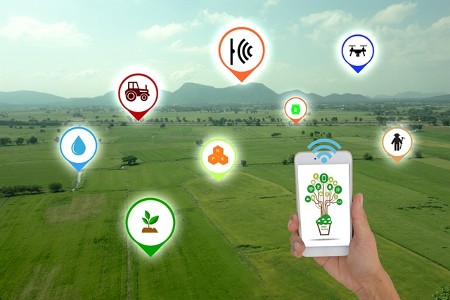June 20, 2020 – Farms in Canada and the United States import migrant workers to do the heavy lifting in agriculture these days. They prepare the fields, assist in the planting, weeding, and harvesting of the bulk of crops that end up on breakfast and dining room tables every day. And right now these migrant workers are victims of COVID-19 and a lack of health standards to ensure their safety.
In the last week in one county to the west of Toronto, 164 migrant workers from Mexico fell ill to the coronavirus. These are workers that arrived in Canada in early April to undergo 14-days of quarantine before being allowed to do their jobs on local Ontario farms. No one was sick coming out of quarantine. But poor and crowded living conditions led to community spread.
On another farm, out of 216 migrant workers, 125 tested positive for COVID-19, and there is no way to know just how far the virus may spread beyond the migrants themselves. This local outbreak on farms is symptomatic of a wider problem facing agriculture in the age of pandemic. We no longer can continue to do things the same way we have done them in the past.
The Agricultural Revolution happened 12,000 years ago. Technology has always been part of agriculture from the first digging sticks to plant seeds, to hand plows, plows pulled by animals, to harvesters, bailers, and combines. Even with all this technology agriculture remains labour intensive requiring lots of human muscle power.
Considering how the current pandemic and future ones may restrict the human migrant option, it should be no wonder that the agriculture’s future will involve a high degree of automation.
Enter the Robots
Robots are the future of agriculture. Whether ground-based or aerial, semi-autonomous and intelligent autonomous machines will become a common sight on farms.
Ecorobotix is a lightweight autonomous drone with built in GPS. Its job is to kill weeds using a herbicide spray. Mounted on wheels and solar-powered, the robot can work all day, using its onboard camera system to survey and target infestations. Farmers who implement the robot report having to use The 90% less herbicide because of it can discern precisely where the weed killer needs to be spread. And it is 30% cheaper on delivery than traditional untargeted treatments.
Will robots like Econobotix replace human labour? There is no doubt that labour-intensive, repetitive jobs are ones that robots can do as well if not better than human counterparts. And in this case, the work of weeding may no longer require any human intervention.
Farms Get Into Sensors and the Internet of Things
The widespread use of sensors on farms is further reducing the need for farm workers. Famers can survey the state of their fields and crops from a home monitor or one onboard a tractor, connected to an array of sensors sending data to the Internet cloud. This is the developing field of precision agriculture. Sensors gather the data and software interprets the results. The type of sensors include:
- Location analysis data collectors for surveying fields and positioning autonomous equipment like weeders.
- Realtime analyzers that assess the chemistry, organic content and compaction of the soil.
- Moisture data collectors for both soil and air to determine where freshwater resources are needed.
- point-to-point weather stations to view the microclimate around individual plants or fields.
The growing use of precision agriculture reflects the changing climate. Areas of the United States, particularly the mid and southwest, are increasingly threatened by drought making water conservation critical. Moisture sensors make it easier to target irrigation. Efficient water delivery systems use precise air valves and sustainable pipes to distribute needed water at the appropriate time and in the right amount to maximize the health of individual plants and fields.
Even the Plants Are Getting Technical
Environmental concerns are making farmers take note of what to grow in their locations. There is an increased focus on “low impact” crops for sustainability, and a move away from animal husbandry as the industry’s carbon footprint is increasingly under examination.
Two interesting movements in both practice and crop science have arisen at opposite ends of the spectrum.
One is organic farming that grows traditional selectively bred crops. Organic farms limit the use of pesticides, avoid artificial chemical fertilizers, and implement natural processes and techniques to reinvigorate soils.
Two is focused on the genetic manipulation of plants to improve their ability to withstand environmental challenges. Drought-resistant wheat and corn, are two examples. Both have been developed through the genetic alteration of the plant. Manipulating the DNA to make these crops resilient in the face of drought is allowing farms to continue to produce crops on increasingly marginal agricultural lands. Tools like CRISPR are being used to replace defective genes with healthy ones, or to alter the characteristics of a gene to increase a plant’s resistance to insects, fungi, and other environmental pests. Known by the acronym GMO, the technology is seen by many to be the best way forward to ensure food security in a world where our human population continues to grow, and climate change represents an existential threat.
A Final Word
Farm labour, the plants we grow, and the food we put on our tables are all tied to innovations being made on farms and in agricultural research being done today whether at colleges or in industry. From energy use to water management to the storage, supply chain, and distribution agribusiness systems, the farms of our past are quickly disappearing turning the growing of crops into high tech.









